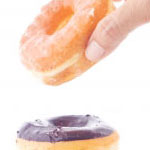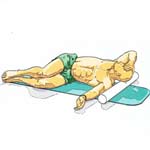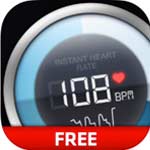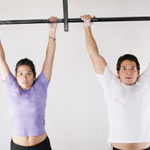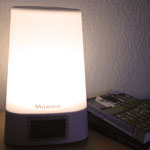“What should you eat before a workout?”
I have been asked this question a few times, especially on a Saturday when our workout is at 12noon.
The ideas I will put forward below are based on a Paleo way of eating which is definitely grain/ gluten free and sugar free, can be dairy free but does not have to be.
Things to consider:
- Metabolic Type ratios
- Food quality (don’t burden the body with toxins)
- Portion size
- Food timing
- Hydration
Eating to your metabolic type
Ideally, you will be eating a natural diet matched to your Metabolic Type (MT) to fuel you body to be able to perform to it’s best potential and avoid disease.
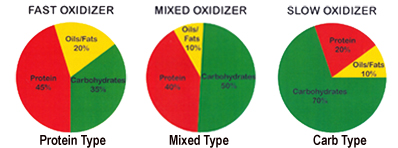
Some people perform better on a higher protein diet, others need more carbohydrates and another group is bang in the middle and needs equal amounts of both. All of the 3 main metabolic types need healthy saturated fats such as coconut oil, butter or olive oil in their diet. The ratios between protein, carbs and fat are also affected by the seasons, a woman’s period, increased activity and stress.
When you start eating to your metabolic base type, you go through a period of fine-tuning to identify your personal ratios within that type. Your type can even change over time as your body come back into balance.
You will know when you have identified the diet that’s just right for you when every meal leaves you feeling full and satisfied, free of the hunger pangs and food cravings that so many people experience soon after they have eaten.
Benefits of Metabolic Typing way of eating include:
- lasting 4 to 5 hours between meals and snacks without feeling hungry
- abundant physical energy
- mental clarity
- freedom from fatigue
- no food cravings
- freedom from irritability and mood swings
- the ability to lose weight and keep it off
- strengthened immunity and stamina
- ability to prevent, reverse or greatly alleviate many kinds of common health disorders
Based on the fact that we all have different needs, you will have to try out which food combinations work best for you.
Food quality matters
You want to make sure you eat as many foods as you can from organic sources. Industrially produced food is full of toxins that make you ill and cause your detox system to get overloaded, and that is without you having the occasional drink. Some vegetables can be bought non organic the EWG has put out a guide called Dirty dozen plus which tells you which fruit and vegetables have the highest load of pesticides. If it kills bugs it will also affect humans – or are we different? The partner guide to go with the black list is the Clean 15, also available under that link.
Want the guide to be digital and portable, get the app on your phone, then you wont have any excuse to eat dirty food.
The same applies to meat, it needs to be organic and pasture raised. In organic animal farming they are not allowed to prophylactically treat the animals with antibiotics. We need to stop having antibiotics in food and for small health issues, they are for emergencies but won’t work much longer due to the over use and the bacteria having become superbugs. You don’t want to get to the point where you have to experience the flesh-eating bacteria such as MRSA before you believe it is a problem. Don’t be fooled, this is not just a US problem. Check out the meat guide from EWG. Animal fat is yummy, healthy and nourishing if the animal was a happy healthy one, we learned in an earlier post that fat stores toxins, which applies to all living creatures.
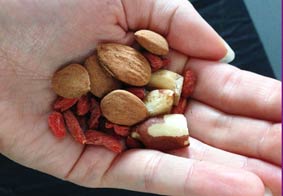
Small portion
Pre-workout snacks should generally be small portions to allow the body to take care of the digestion easily. You wouldn’t want to direct all your blood flow to your digestive system when you are about to jump around in the gym where you need blood flow to the large muscles to move you around.
A pre-workout snack is not about fuelling your workout, it’s more about avoiding sudden hunger and to keep the blood sugar stable.
The pre-workout snack does not fuel the workout
Every meal, every day is about fuelling your workouts. It takes many hours to refill your muscle and liver glycogen stores, so until a meal has been processed your body has to rely on existing fat and glycogen reserves to power the workout. If you eat proteins, healthy natural fats and good carbohydrates such as vegetables and some fruits and the occasional white rice or sweet potato you will have plenty of muscle glycogen to fuel your activities.
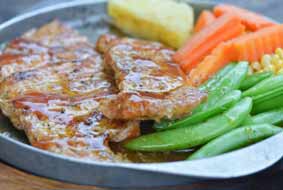
Image courtesy of rakratchada torsap, FreeDigitalPhotos.net
Your body is able to make glucose from fatty acids as well as from protein, which means it can also break down muscle protein if needed.
This is one reason why people that train for weight loss, who do not eat enough, trigger the body to break down muscle to provide the glucose needed for the brain and retina of the eyes. If we want to avoid one thing, it is breaking down our metabolically active muscle tissue.
When burning fat for fuel, the body produces ketone bodies, which when on a low carb diet are used as the main energy source as long as the blood sugar levels remain low.
Food timing
Not everyone does well exercising with a full stomach.
If you are having a full meal you would probably want 2-4 hours between eating and exercising.
How long the food sits in your stomach is dependent on how healthy your digestive system is. The digestive process starts at the mouth with chewing and in the stomach, preparing the food for the nutrient extraction in the intestine.
In today’s world, where everyone is stressed and meals are taken in on the go, food sits in the stomach much longer than it should. Stress and zinc deficiency cause many many people to lack appropriate stomach acid levels. Without stomach acid, you cannot absorb any zinc from food or supplements. It is a chicken egg situation that requires some intervention for a period of time.
If you experience any of these symptoms regularly you should consider testing for low stomach acid:
- bloating
- belching
- burning
- flatulence 1-2 hours after meals
- sensation of feeling overfull after food
- indigestion
- diarrhoea
- constipation
- bad hair and nails
When the digestive process does not work optimally you are not able to extract the nutrients you need from your food. You could look well fed but still be undernourished and deficient in key nutrients that are essential to optimal health. Should you be missing your gallbladder, you will need extra support for the digestion of fats. See the fat facts for why it is so important.
It would be a shame if you were investing time and hard earned cash into feeding yourself better but then lacking the ability to use the abundance of nutrients.
The best pre-workout snack or meal is that one that does not make you feel sick or slow.
These are just a couple of pointers; I will look at this subject again in the future. Meanwhile, should you feel you need support with your digestive issues feel free to get in touch to get full personal guidance on your digestive health.
Don’t forget hydration is part of pre-workout preparation
It is crucial that you are well hydrated at all times but especially before a workout. As I mentioned before, dehydration is the cause of a lot of health problems and it takes up to a week to re-hydrate once you have lost track of hydrating properly.
Hydration tip: Save the calorific artificial sports drinks, use a 50/50 split water and coconut water to drink during and after workouts. Coconut water has a great natural electrolyte replenishing composition.
Run your own experiment
Try a small pre-workout snack 60-30min before exercising.
Take note of what and how much you had and then add comments on how the workout felt.
Do this a few times to establish which time and food combo works best for you.
The less time before a workout, the smaller the meal!
Download your free mini breakfast and snack recipe collection and experiment tracker
A small list of “components” suitable for snacks:
- Vegetables with nut butter
- Berries, ideally local and in season
- Canned fish, mackerel, sardines, tuna, herring, salmon
- Hard boiled egg with sea salt
- Jerky that has no sugar or other nasty ingredients
- left over meat
- raw milk cheese, if you can tolerate it
- Nuts and seeds, use with care, some people are able to over eat on these.
- Olives
- Avocado (with salt and pepper or Tabasco)
I have prepared a little resource for you with breakfast recipes that also double as snack. Most of them are easily eaten when out and about.
Prepare food in batches where possible, freeze or store in the fridge to cover yourself for several days.
Once you get into a habit of planning your food options ahead of time you will feel a lot better physically and mentally and be less stressed.
No more suboptimal emergency choices caused by not being prepared.
Download your free mini breakfast and snack recipe collection and experiment tracker
If you are wondering why you need to compose your snacks and meals to the Metabolic Typing ratios watch out for Part 2 which explains all about the components Fat, Protein and Carbohydrates and how they benefit your body.
If you have been thinking about getting support for your nutrition transformation from a coach like myself, get in touch to discuss you situation and goals. It is always easier with a guiding hand. My clients enjoy nutrition and lifestyle coaching locally in Leeds, West Yorkshire, UK or virtually depending on what suits them best.
Let me know how you get on with the self test and development of your personalised healthy snack combos.
I’d love to see your snack pics and hear how your workouts feel with fine tuned food choices?
If you need any further support put your question in the comments below, I love to hear from you.



